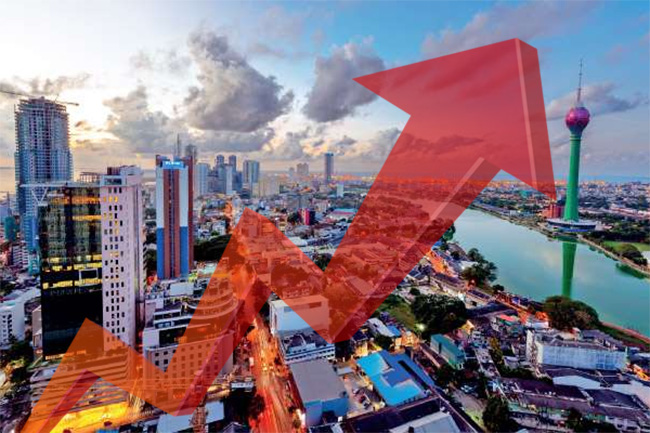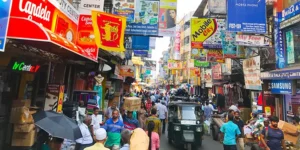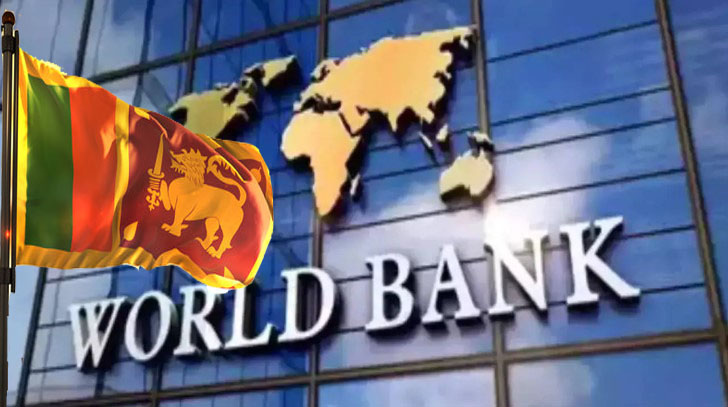
Sri Lanka’s Economic Recovery Holds, but Headwinds and Structural Flaws Persist
- CNL Reporter
- May 11, 2025
- Weekly Economic Review
- Sri Lanka’s Economic
- 0 Comments
Weekly Economic Review and Analysis — May 2025
Sri Lanka’s economic trajectory in April 2025 reveals cautious optimism. While stabilization continues, growth is expected to moderate, and critical structural issues remain unresolved. According to the Central Bank of Sri Lanka, headline inflation stood at 2.0% in April, easing from 2.6% in March, signaling a gradual retreat from deflationary pressures. Simultaneously, the Asian Development Bank (ADB) projects GDP growth at 3.9% in 2025, tapering to 3.4% in 2026, reflecting the challenges of sustaining momentum in a post-crisis landscape.
The recovery, which began in mid-2023, continued through 2024 across all major sectors. Lower energy prices contributed significantly to easing inflation, alongside increased private sector credit and steady tourism and remittance inflows. This macroeconomic rebound, while encouraging, masks deep-seated vulnerabilities.
On the external front, Sri Lanka’s gross official reserves rose to $6.5 billion by the end of March 2025, a clear sign of strengthening foreign currency liquidity. The Extended Fund Facility (EFF) arrangement with the International Monetary Fund (IMF) has played a pivotal role in underpinning this recovery. However, the IMF’s framework leans heavily on revenue-based fiscal consolidation—primarily through increased taxation—rather than prudent cost management or spending cuts.
While fiscal discipline has improved, the debt burden remains steep. Public debt is not expected to fall below 95% of GDP until 2032. The ADB warns that maintaining reform momentum is crucial to avoid slipping back into debt distress. Strengthening trade, investment, and private sector-led growth without adding to the debt stock is seen as a path to resilience.
Government revenues for Q1 2025 reached LKR 1,046 billion, up from LKR 837 billion in Q1 2024, thanks to stronger tax receipts. Yet, current expenditure ballooned to LKR 1,226 billion, outpacing revenue growth. The government is expanding subsidies for farmers and fishermen and hiring unemployed graduates, moves that may temporarily alleviate social pressures but risk deepening fiscal imbalances. Critics argue that punishing thrift—through taxes on bank deposits—and increasing service export levies could harm long-term savings and growth potential.
On a social level, the picture remains sobering. Poverty remains high, with the rate stuck at 24.5% in 2024. Many Sri Lankans continue to seek employment abroad, a reflection of domestic economic fatigue and limited opportunities. The country’s demographic challenges are growing more pronounced, driven by weak job creation and youth disillusionment.

Amid these difficulties, the government has launched several initiatives aimed at softening the cost of living and boosting rural entrepreneurship. These include seasonal food assistance packages and plans to establish a development bank to support small and medium-sized enterprises (SMEs). These measures, though positive in intent, are unlikely to resolve structural economic issues without deeper reforms in governance, public sector efficiency, and labor productivity.
Tourism remains a critical lifeline. The sector saw a robust 18.87% year-on-year increase in arrivals during the first week of May, with India, the UK, and China being the top source markets. Earnings from tourism rose to $256.7 million in April 2025—a 13.7% increase from the previous year. Cumulatively, Sri Lanka has earned $1.38 billion from tourism in the first four months of 2025, up 10.2% from the same period in 2024.

The government has ambitiously set a target of 3 million arrivals and $5 billion in tourism revenue for 2025, following a strong $3.17 billion performance in 2024. However, meeting these targets may be challenging without significant improvements in tourism infrastructure and service quality.
Remittances, another pillar of the external sector, rose by 18.8% year-on-year in April 2025 to $646.1 million, despite a slight dip from March’s pre-New Year peak of $693.3 million. Total remittances for the year up to April stood at $2.46 billion, reflecting sustained outmigration and improved collection mechanisms.
While this inflow provides vital foreign exchange, it also highlights underlying concerns: rising unemployment, underemployment, and the long-term social costs of labor outflow.
The recent history of Sri Lanka’s economic crises—rooted in flawed macroeconomic policy, excessive state intervention, and debt-fueled populism—continues to cast a long shadow.
The post-2022 default recovery has been aided by external support, but internal contradictions remain. Fiscal expansion through subsidies and government hiring may erode the gains from painful reforms if not carefully managed. At the same time, policy choices such as taxing savings and discouraging service exports risk stifling long-term growth drivers.
Outlook and Recommendations:
Sri Lanka’s economic recovery is real but fragile. Rebuilding from the 2022 sovereign default demands more than short-term fixes. To sustain and accelerate growth:
Fiscal prudence must be rooted in expenditure discipline, not just tax hikes. A leaner, more efficient public sector is critical.
Private sector empowerment, especially through SME support and deregulation, can drive inclusive growth.

Tourism and remittances should be harnessed through targeted investment, not treated as stopgap solutions.
onetary policy must prioritize stability over politically convenient rate cuts, which have previously triggered crises.
Social protection must be coupled with economic opportunity—migration should be a choice, not a necessity.
In summary, April 2025 showcases a nation inching towards recovery but still tethered to its past economic missteps. With elections and debt restructuring uncertainties fading, Sri Lanka stands at a crucial juncture. The path ahead demands political will, consistent policy, and a shift from populism to pragmatism. Only then can the island truly transition from recovery to sustainable prosperity




